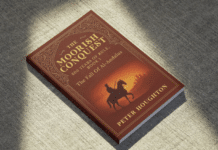The legendary Porsche 911 has been manufactured since 1963 by the German company Dr. Ing. h.c. F. Porsche AG (yes, this is the official name of Porsche). The 911 model was initially created to replace the outgoing another legend – Porsche 356 model and was introduced in two different body styles during its production run – coupé and convertible.
Unlike other sports cars of its era, the 911 has always employed rear-mounted, air-cooled engines. The engine in the rear is a feature that continues to make it stand out from rivals even today.
Since the debut of the first generation 911 model in 1963, it has been continuously improved and updated to this date. Constant improvements and the overall evolution of the model resulted in a wide range of body styles and engines.
It also boasts several technological advancements over its lifetime, such as anti-lock brakes, traction control, and the introduction of all-wheel drive. Powertrain configurations deserve a chapter for themselves, ranging from naturally aspirated to turbocharged engines.
The earliest editions of the 911 had an air-cooled, rear-mounted, 2.0 L (1,991 cc) 130 PS (96 kW; 130 hp) flat-6 “boxer” engine, similar to the 356’s four-cylinder 1.6 L unit. It was mated to a five-speed manual “Type 901” transmission. The car had 2+2 seating, but the rear was tiny, like the 356. The styling was designed mainly by Ferdinand “Butzi” Porsche, son of Ferdinand “Ferry” Porsche. Erwin Komenda, the leader of the Porsche car body construction department, was also involved in the design.
In the 70’s model range of the 911 became wider — a few more modifications were introduced. Entry-level Carrera T, the midrange E, and the top-of-the-line S. All models got a new, larger 2,341 cc (2.341 L; 142.9 cu in) engine. This is universally known as the “2.4L” engine, despite that actually, its displacement was closer to 2.3 liters. Perhaps this was done to emphasize the increase over the 2.2 L.
The new power ratings for the T were 130 hp (97 kW), or 140 hp (104 kW) in the U.S., 165 hp (123 kW) for the E, and 190 hp (142 kW) for the S. The 911E and 911S used mechanical fuel injection (MFI) in all markets. With these improvements, the Porsche 911 became an even more formidable performance car, with a classic design that stands the test of time perfectly.
The Porsche 911 has become known for its performance, engineering excellence, classic design, and usability as a daily driver – making it an icon in the automotive world. It’s undeniably one of the most successful sports cars of all time.
Many collectors want this car because of its beauty, classic style, and performance. But if you’re going to buy one – you should see the vehicle’s history report before purchasing to ensure that it is in decent condition. In addition, to checking for possible odometer rollback, this report will tell you whether or not the car has been in an accident, how many owners it had before, and other helpful information.
Getting a vehicle history report is easy – you can do it online using a VIN decoder in just a few minutes. All you need is a vehicle identification number (VIN).
Although 911 has undergone numerous changes since its inception, certain features and nuances have remained constant throughout its lifetime – making it an instantly recognizable classic sports car. As a result, the Porsche 911 is a must-have car for collectors and a dream car for enthusiasts.














